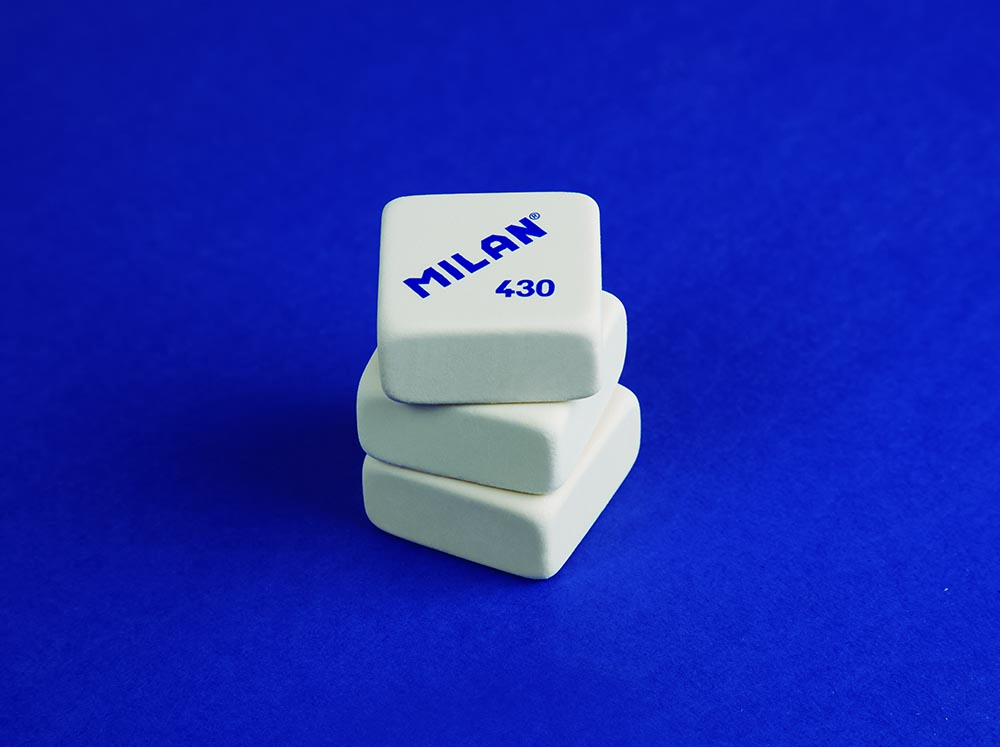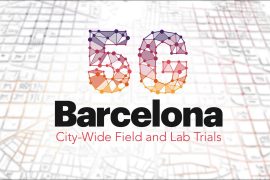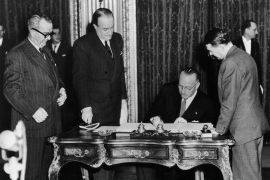[dropcap letter=”B”]
read or cream made. We are not talking about pastries or about the starry ingredients of a menu, but about types of erasers that have made a company famous, and whose trademark reminds us of the city of Milan. Let’s talk about MILAN. A company that, in spite of what can be thought of due to its name, it is located very close, at the very centre of Empordà.
Although with the rise of computing we tend to handwrite less, the eraser and stationery brand enjoys a fabulous health. The mythical eraser, the classic MILAN 430 -that we all have used more than once in its white, pink or green variant- has turned one hundred years in 2018 and continues to be the best-selling model of the company, of which it they produce 20 million a year that are sold in more than 110 countries, including Mexico, Vietnam, Japan, Chile, Russia, the United States, Madagascar or Mongolia; an international tour that began in the fifties, with its first exports of the product.
“A well-preserved eraser can last up to twenty years”, explains David Marcó, CEO of the MILAN group. The key, partly, is that since its inception the MILAN 430 rubber is manufactured with soft synthetic rubber. Its effectiveness when erasing, however, depends on other external factors, such as the type of mine that must be erased (it is always easier to remove soft mines such as 2B or B), the pressure of the writing, or the quality of the paper
In addition, MILAN also has other successful articles produced in Mont-ras (Baix Empordà). Among these products, you can find the cream MILAN 624 -the first eraser made in Europe based on plastic resin and covered with a pink cellophane-, or one of the recent achievements: eraser-sharpener for pencils. We also find the Master Gum 1420, capable of erasing graphite due to the simple adsorption after the contact with the rubber, and also continues manufacturing the classic eraser called Gigante, for industrial use.
Currently, the company distributes and sells more than 3,000 references of products and accessories for school use, and has registered more than seventy designs developed by its R & D department.
The business initiative arose during the First World War, when the great-grandfather of the current managing generation, Santiago Marcó and Pomar, the son of teachers and educated by his uncle, maestro Avel·lí Serra, after working in the cork industry devoted himself to commercializing accessories and spare parts for this industry.
EASTERN EUROPE, A STRATEGIC MARKET
In November 1989 export could start to Eastern European countries, and in 2005 the company created the subsidiary MILAN POLSKA. “The decision was made as a result of the great potential that we saw in the area, and Poland was established as a strategic point of operations for the Eastern European zone”, explains David Marcó. In this way, the international expansion continues.
With a turnover of a wide variety of articles that in 2017 amounted to about 27 million euros, the eraser market represents about 20%. Proof of this, is that the company settled in the Baix Empordà manufactures up to 200 different eraser models and that 2,500 tons of erasers are produced annually at the Mont-ras factory. 75% of the erasers, moreover, are exported everywhere. A real success. But, like all successes, they want to imitate them, and as new developments are being developed, copies and counterfeits also arise. Like oval shaped erasers “cat tongue”, of which MILAN was the first world manufacturer in 1950, being at this time imitated by other manufacturers.
HISTORY LINKED TO THE TERRITORY
MILAN is currently managed by the fourth generation, and today the brand is marketed by FACTIS SA, also at Mont-ras.
The business initiative arose during the First World War, when the great-grandfather of the current managing generation, Santiago Marcó and Pomar, the son of teachers and educated by his uncle, maestro Avel·lí Serra, after working in the cork industry devoted himself to commercializing accessories and spare parts for this industry. Thus, he met in Palamós the English chemist Mr. Ralph Somers, who gave him some formulas to produce ink, sealing, adhesive glue and eraser rubber. Manufacturing these articles started the industrial initiative.
The initial workshop of Santiago Marcó, in 1918, was located in the town of Palafrugell, and it was not until the second generation, with Josep Marcó Dachs at the head, that was settled in Mont-ras, the town nearby, where they could have more space for the factory (the business had already been consolidated) and more possibilities for expansion in an appropriate industrial zone. “These days, to be able to grow, one needs to find engineers, mechanics and IT professionals that can adapt to the sector, increasingly technified”, they explain at the company.
Since the invention and commercialization in 1770 of what is considered the first rubber to erase by Edward Nairme -natural rubber made- the sector has evolved, but its improvement is still an indispensable task. MILAN is following the trail.



















